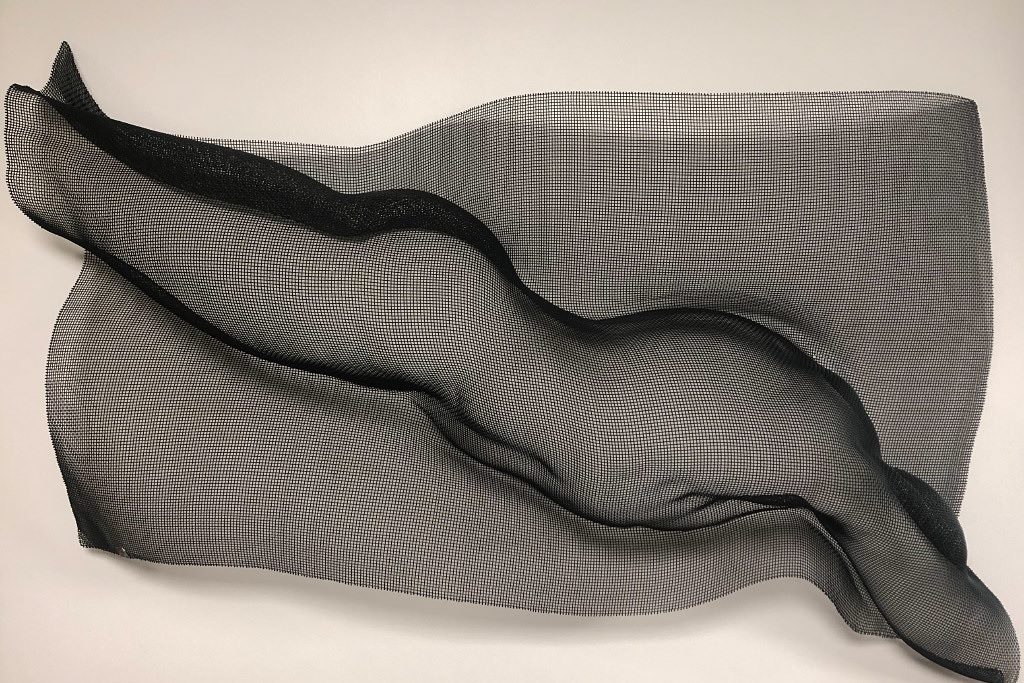After our journey into the surreal last week, this week, we’re going to focus on figurative art: representative art that is clearly derived from real object sources. The artists that we are focusing on here are all creating work that presents the human form in a recognizably figurative manner.
But that is not to say that there is not a rich variety of work on show. This week’s blog includes the Cubist-inspired works of Miroslav Lovric, the striking wire mesh nudes of Eric Boyer and the delicate, abstracted oil paintings of Brian Cameron.
To see more of these, either come into the gallery for a visit and see the works first-hand, or visit our website and search our Catalogue. Click the link and go to Style and search for “Figurative” in the drop-down menu. This will include all of the artists covered in this blog and more.
Brian Cameron

A native Oregonian, Brian Cameron was born in Seaside in 1952. He has lived his entire life on the north Oregon coast as did two generations before him. This long exposure to the peculiarities of the area has resulted in a bond with the culture and traditions of the North West. Rugged individualism, hard work and a sense of oneness with, and appreciation of nature are all aspects of this culture. These are qualities well suited to an artist. He works in a range of styles, producing still lifes, landscapes and sculptures, but it is his softly-painted and beguiling figurative works which are a fixture of his work on display here at RSG.


Germaine Bennett

Born in gangster-era Chicago and raised in Hurley, Wisconsin, a town of 3,500 residents and more than 80 bars, it is no surprise that many of Germaine’s works are filled with images of raucous nightlife. Her monotype Dancing in the Dark is a particularly excellent example of this. But her work is not just this, as the other showcased piece in the blog will testify to. Germaine has traveled widely and her work shows these different inspirations. Her travels in India are shown by the vivid use of colors and subject matter of her linocuts.

Eric Boyer

Using wire mesh, Eric creates incredibly dynamic human figures, which writhe with movement, showing his particular skill with this material, which has been built up over years of work. As Eric explains, it was a a chance event that led to his taking on this artistic path: “It was while employed in a blacksmith shop in Southern Vermont in the mid-eighties that I got my hands on scraps of woven mesh, trimmed off during fireplace screen fabrication. A few casual sketches and figure studies later, and I began creating larger and entering exhibitions.”


Kara H. Pilcher

Aqueous Media artist Kara Pilcher’s work are filled with both movement and the potential of movement. Her dynamic work Hop Hip is a splendid example of both this and a theme that frequently appears in her work: the wide variety of emotions and gestures of dance. She is a trained dancer and danced for more than 25 years with the Power and Praise Dance Company, a contemporary company with special interest in themes reflecting spirituality, theology, and liberation. Kara has also served as the President of the Watercolor Society of Oregon and taught painting classes and workshops.

Miroslav Lovric

By day, Miroslav Lovric is a security guard at the Portland Art Museum; by night, he’s a painter inspired by the masters that he is surrounded by. Born is Bosnia, Miro has worked at PAM for more than 15 years and knows the galleries of the museum by heart. As part of RSG, the gallery has displayed many of his works, including these current, Cubist-inspired pieces. Though he has spent years looking at them, the artworks he sees every day continue to inspire him: “I cannot say, ’Ah, I know that painting; I don’t want to look at it anymore,’ because those artworks are really alive,” Lovric says. “Even after 20 years, I can always learn something new.”.
